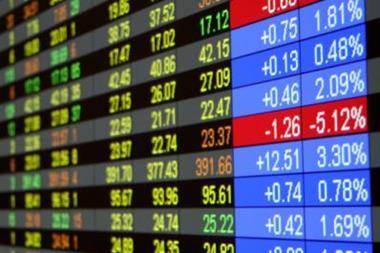The European Union Emissions Trading Scheme (EU ETS) is a taste of the increasing amount of environmental legislation that can be expected over the next few years. The potential impact at the corporate level should not be underestimated. Organisations will find themselves increasingly burdened by escalating compliance costs, unless they respond to the challenge and actively manage their exposure.
I am specifically highlighting here some of the financial implications of the EU ETS, since future legislation in the environmental area will almost certainly raise similar issues. Organisations need to assess their readiness for the future by identifying corporate factors that, although not necessarily explicitly referred to in the legislation, are affected to some degree. Nor is it too early to start thinking about the potential impact of the Kyoto phase, which starts on 1 January 2008.
The challenge of compliance
Operating within the EU ETS will prove challenging. Since January 2005, operators of all installations covered by the scheme must have had a permit to emit greenhouse gases, and must ensure that emissions are monitored strictly in accordance with their monitoring and reporting plan.(1)) The installation operator must ensure that the emissions are independently verified and that a verified emissions report is submitted by 31 March every year, starting in 2006.(2)) Failure to do this will lead to blocking of the operator's registry account and ultimately to determination of emissions by the regulator and other penalties.(3))
For verification, all source data and supporting material must be stored in a secure environment with a complete audit trail. Once verified, the data must be locked down to prevent any modifications and must be archived for 10 years. For organisations with even just one production site, this represents a complex and costly issue.
To achieve compliance, each installation operator must surrender allowances sufficient to cover the verified emissions for the first compliance period by 28 April 2006. Failure to surrender sufficient allowances will result in a penalty of EUR40/tonne (EUR100/tonne in the next phase), and the undischarged obligation will be carried forward into the next compliance period.
Unless prevented from doing so because of failure to obtain verification, operators will normally be able to avoid penalties by buying allowances in the market. However, the emissions market is currently volatile and unpredictable. To minimise the risk of having to buy or sell allowances at an unfavourable market rate, operators will need to forecast their emissions accurately (based on a production plan) and to update this forecast continually by monitoring actual emissions and revised production targets.
Financial impact
The EU ETS has implications for the accounting treatment of allowances, taxation, financial regulation and insolvency. In the UK, Defra has provided guidance, but there are still a number of unresolved issues,(4)) and participants are being advised to seek independent professional advice.
For the EU ETS as a whole, and for the UK individually, the average number of allowances issued per installation will be 250,000 per year. These need to be accounted for at market price, even if the company only uses them for compliance and does not trade them. At recent prices, this equates to EUR5m per installation on average, a significant balance sheet item.
Changes in the market price of allowances could also have a large impact on the profit and loss account. If IFRIC guidelines are followed,(5)) the profit and loss should reflect the liability to surrender allowances (calculated at the reporting date) as an expense, and the grant of free allowances (calculated at the issue date) as income. In the current year, the price of allowances has risen from EUR9 to nearly EUR20 in the period from the end of February to the end of May. If the EUR20 price is sustained, this would result in a reported loss, for the average installation, of EUR2.75m for the year.
There is concern that this accounting convention does not faithfully recognise economic reality, particularly where the participant does not trade. As a result EFRAG(6)) has refused to endorse the IFRIC interpretation, and the ASB(7)) has declined to issue mandatory guidelines until the situation has been resolved by IFRIC.
The sale or purchase of allowances is classified as a supply of services for VAT purposes and is therefore subject to VAT at the standard rate.
While VAT is normally accounted for by the vendor, the EU VAT committee has issued a non-binding guideline that for cross-border transfers of allowances, the VAT shall be accounted for by the purchaser under the 'reverse charge mechanism'. The UK has adopted this guideline.
Transfers that are free of charge (including the free issue of allowances) are not classed as taxable transactions for VAT purposes. The level of VAT payments will therefore be determined by the level of trading and not by the number of allowances issued. For a company with the average number of allowances, sale of 10% of its allowances would result in VAT of EUR85,000. Though this is small compared with the total value of allowances held, companies should be aware that for forward contracts, the VAT may become payable prior to the actual transfer of allowances.
The regulatory position regarding trading of allowances is also unclear.
Defra has stated that spot trades (for immediate delivery) will not ordinarily require FSA authorisation, but that the position regarding forward trades and other instruments may require testing in the courts. Emission allowances and related derivatives do not fall within the scope of current EU regulation, and different products and services may be available in other EU member states. However, this may change under the MIFID(8)) directive, scheduled for April 2006.
Operational impact
The EU ETS will impose additional overheads on a company to put in place the necessary monitoring and reporting systems. These will impose additional roles and responsibilities for which the necessary skills may not exist.
Even those companies that engage in active trading in the energy markets may find that position optimisation is much more complex when carbon costs are taken into account. Scheduling of generating plant, for example, will need to take into account the emission factors for different fuels and the carbon price as well as the traditional spark spread or dark spread.
Risk
There is a huge amount of risk involved in compliance with the EU ETS. One of the biggest risks is failure to obtain verification. This could be caused by inadequate records, loss of data, or by failure to stick to the monitoring and reporting plan. Failure to submit a verified emissions report by 31 March will result in blocking of transfers on the operator's account. If the problem is not resolved before the compliance deadline of 30 April, the member state will be obliged to impose severe penalties.
As a result, the operator's compliance position may not be finalised, possibly resulting in qualified company accounts.
Failure to surrender the correct number of allowances for any reason will not only result in a financial penalty, but to an appearance on the published list of defaulting companies. This could undermine investor confidence and devalue the company's green credentials.
Finally, the carbon market is new and potentially volatile. At the time of writing, prices have been flirting with the psychologically important EUR20 barrier. A net deficit or surplus of allowances in the market at the end of the compliance period could lead to wide price changes. This is likely to be even more marked at the end of the first phase of the scheme (December 2007), as allowances cannot be banked into the next phase, while any undischarged obligations will be carried over. Failure to forecast and monitor the compliance position not only exposes the company to an uncertain volume risk (surplus or deficit of allowances), but may also force any deficit to be made up in the market at the time of greatest price risk.
Board level visibility
All of these issues could have significant implications for your business.
A strategy to manage the impact will impinge on many areas of the business, not just the production aspects. The EU ETS specifically, and the wider considerations of future environmental legislation, should be on board agendas if companies are to continue successfully into the 21st century.
How well prepared are you?
(1) EU Monitoring and Reporting Guidelines, Commission Decision 2004/156/EC, 29 Jan 2004
(2) EU Directive 2003/87/EC, 13 Oct 2003
(3) The GHG Emissions Trading Scheme Regulations, Statutory Instrument 2005 No 925, TSO
(4) Market Development Issues, Defra, 6 Jan 2005
(5) The International Financial Reporting Interpretations Committee (IFRIC) has issued an interpretation on the accounting treatment of emission allowances (IFRIC 3):
- allowances must be treated as intangible assets (IAS 38). Allowances that are issued at less than fair market value should be recognised at fair market value initially.
- the difference between the fair market value and the amount paid should be accounted for as a government grant (IAS 20).
- as emissions are made, a liability (measured at current market value) should be recognised for the obligation to deliver allowances. This should be accounted for as a provision (IAS 37)
(6) European Financial Reporting Advisory Group
(7) Accounting Standards Board
(8) Markets in Financial Instruments Directive, 2004/39/EC
Dr Geoff Harrison is a consultant with Siemens plc, Tel: 01423 524192, E-mail: geoff.harrison@siemens.com
DID YOU KNOW THAT
- At recent price levels, the average annual value of the allocated allowances for an installation is EUR5m?
- This appears on the corporate balance sheet?
- An installation with the average number of allowances could be reporting a loss of EUR2.75m for the year if the current market price is sustained?
- Delaying closing your position to the last minute takes you to the point of greatest price risk?
- You need to consider how you address the corporation tax and VAT issues?



















